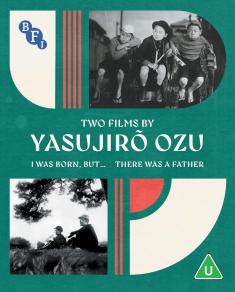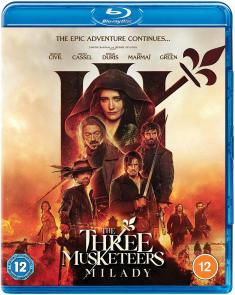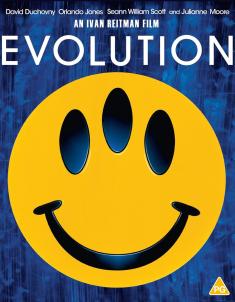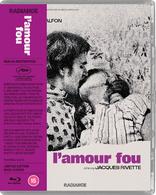Kagemusha
Overview -In his late, color masterpiece Kagemusha, Akira Kurosawa returned to the samurai film and to a primary theme of his career—the play between illusion and reality. Sumptuously reconstructing the splendor of feudal Japan and the pageantry of war, Kurosawa creates a historical epic that is also a meditation on the nature of power. The Criterion Collection is proud to present Kagemusha for the first time in its full-length version in the United States.
Storyline: Our Reviewer's Take

In the late 1970's, Akira Kurosawa was at a serious crossroads in his once-illustrious career. The great Japanese master hadn't made a film in nearly five years, but he remained active with several projects in various stages of development, including a samurai epic called 'Kagemusha.' Despite the international success of his previous film 'Dersu Uzala' (1975), which was filmed in Siberia with Russian funding, he was unable to find financing within the Japanese film industry, which was suffering from an economic downturn. Whereas Kurosawa's films had previously been a safe bet, times had changed, and even the venerable Toho studios (which had readily backed Kurosawa in the past) considered Kurosawa's large-scale productions too risky and unlikely to turn a profit. Faced with these difficult conditions, and with no money of his own (a situation that forced him to direct and appear in Japanese TV commercials), Kurosawa sought financing from international sources, again to no avail. Seeking support in America, Kurosawa finally found financial support when two of his biggest and most successful admirers –George Lucas and Francis Ford Coppola – took advantage of their own directorial success and called in a favor: Lucas approached Alan Ladd, Jr. at 20th Century Fox (the executive who had green-lit 'Star Wars'), and Ladd agreed to finance 'Kagemusha' in partnership with Toho, which had been promised $1.5 million for all international rights to distribute the film, with Fox exclusively distributing the film in the United States
During the five years between 'Dersu Uzala' and the start of production on 'Kagemusha,' Kurosawa was convinced that his ambitious epic would never be made, but he continued to develop the project by creating hundreds of paintings and drawings of scenes from the screenplay (written with longtime Kurosawa collaborator Masato Ide) that were later used to interest potential backers. Functioning as lavish storyboards, these colorful and highly detailed paintings allowed Kurosawa to design all of 'Kagemusha' before a single frame of film was exposed.
The story of 'Kagemusha' came to Kurosawa while he was reading a history of 16th-century feudal Japan, from which he learned that the great Japanese warlord Takeda Shingen (1521-73) had employed a double to confuse his enemies. Inspired by this anecdote, Kurosawa and Ide fleshed out the story of 'Kagemusha' (subtitled "The Shadow Warrior"), in which a common thief is recruited to impersonate Shingen after the warlord is mortally wounded by an assassin's bullet. Initially reluctant to accept the role that's been thrust upon him, the ignorant thief Kagemusha gradually learns the importance of his assignment, and finds himself haunted by the warlord's spirit and bolstered by his own grandiose ambitions. As he begins to understand the complex interplay between reality and illusion – and between the dead warlord's mystique and his own uncertain abilities – Kagemusha continues to fool both his enemies and his own soldiers alike, maintaining the illusion that Shingen is still in power. It's a delicate balance of deception and defense, intensifying when enemy warloads grow increasingly aggressive in their war against Shingen for control of Kyoto, the hotly contested seat of power in feudal Japan.
As a meditation on the nature of power, 'Kagemusha' represents Kurosawa's darkest, most pessimistic study of the human condition. Even as the lowly thief comes to realize his own potential as a feared and powerful leader, the nature of war is such that his brief reign is doomed, and 'Kagemusha' ends with the great impersonator inevitably crushed by his own ambitions and the deception he cannot maintain.
Presented here in its uncut 180-minute international version (the American theatrical release ran 159 min. and excluded the appearance of long-time Kurosawa favorite Takashi Shimura), 'Kagemusha' is a challenging film with complex themes of illusion vs. reality and the shifting nature of identity. Featuring epic battle scenes that rival anything in Kurosawa's filmography, 'Kagemusha' marked an impressive return for Kurosawa after years of creative uncertainty, and the support of Lucas and Coppola resulted in yet another Kurosawa classic. Ironically, however, the production itself was fraught with serious problems, resulting in a film that bore little resemblance to Kurosawa's original concept. Kurosawa's long-time cinematographer Kazuo Miyagawa was forced to leave the production due to illness and failing eyesight; Kurosawa and his frequent score composer Masaru Sato parted ways over creative differences; and worst of all, Kurosawa was forced to replace his chosen star, Shinaru Katsu, on the first day of filming. Best known for his light-hearted portrayal of Zatoichi, the blind samurai, in a series of enormously popular Japanese action comedies, Katsu demanded that he be allowed to monitor his performance through the use of on-set video camera, and as a demanding director with an equally defiant ego, Kurosawa refused. Tensions escalated until Katsu was summarily replaced by Tatsuya Nakadai, a bankable star whose presence turned 'Kagemusha' away from the lighter tone that Kurosawa and Ide had originally injected into their screenplay. In hindsight, it's now widely agreed that Nakadai was miscast in the title role, but there's ample room for argument in his favor: Nakadai's intensity is what makes 'Kagemusha' so effectively tragic, and speculation about how Katsu's performance might have resulted in a greater, more appealing film is arguably beside the point. One way or another, Kurosawa made the film his way, and 'Kagemusha' can rightly take its place among the director's late-career classics.
Video Review

Criterion's Blu-ray release of 'Kagemusha' takes about 20 seconds to boot up (more or less, depending on the efficiencies of your BD player), during which time a white Criterion "C" logo is displayed in the upper-let corner on a black background. The main menu then appears, offering a no-frills line-up of the disc's functions and features. Kudos to Criterion, as always, for keeping their menus clean and simple yet aesthetically pleasing.
As expected from any Criterion Blu-ray release, 'Kagemusha' represents the state of the art in HD presentation. Criterion's previous DVD release was perfectly acceptable by format standards, and its Blu-ray upgrade is nothing less than breathtaking. 'Kagemusha' is a showcase for well-chosen locations (including many of Japan's most resplendent feudal-era castles), and Kurosawa's compositions and color strategies were the product of years of planning and previsualization. The result is a film in which a diverse palette of colors plays a pivotal role in advancing plot, theme, and character. Criterion's fully restored 1080p HD transfer recreates this palette with exacting standards of crispness, clarity, and accurate preservation of colors as they were meant to be seen. You won't find any spillage or blossoming here: The dazzling colors of 'Kagemusha' are richly displayed with sharpness and clarity, made possible not simply by the advent of HD, but because the 35-millimeter source materials were created with surgical precision and impeccable craftsmanship. Blacks are rich and deep, and both flesh tones and contrast levels appear completely natural and entirely consistent. On purely visual terms, 'Kagemusha' represents another Criterion triumph. Many scenes convey an almost three-dimensional depth, and Kurosawa's compositions consistently lend themselves to the advantages of HD. Costume design also reaps the benefits of HD clarity: It's here that Kurosawa's period perfectionism is most brilliantly served. Every detail of samurai armor is breathtaking to behold, and the same holds true for the beautiful landscapes that provide such a painterly backdrop for Kurosawa's uncompromising tragedy.
Audio Review

'Kagemusha's original stereo soundtrack is impeccably recreated in DTS-HD Master 4.0-channel Audio. Channel separation is robust and accurate, and the film's dramatic bursts of music (considered by some to be one of the film's few artistic drawbacks) are fully balanced and for the most part acceptable despite their occasionally overwrought intrusion. The battle scenes will give any system a muscular workout, but since the source is 1980-vintage stereo, don't expect any state-of-the-art sonic dynamism. This is simply a well-mixed and well-mastered soundtrack that has been expertly remastered to present-day DTS-HD Master Audio standards, and as such it is quite satisfying and dramatically effective.
Special Features

As with all of Criterion's releases of Kurosawa films, 'Kagemusha' is accompanied by a wealth of scholarly bonus features.
- Feature-length audio commentary by Kurosawa scholar Stephen Prince (author of The Warrior's Camera: The Cinema of Akira Kurosawa) is, like Prince's other Criterion/Kurosawa commentaries, a model of astute film scholarship. Prince places particular emphasis on historical facts and 'Kagemusha' as a reflection of Kurosawa's own personal "psychodrama," so much of his analysis is related to the dynamic between the film's epic narrative and the personal difficulties that Kurosawa endured throughout its development and production. As always, Prince's analyses of composition, editing, and other aspects of Kurosawa's filmmaking are placed in richly informative context, resulting in the fullest possible appreciation of the director's achievement.
- "Lucas, Coppola and Kurosawa" (19:21) is an interview-based featurette in which the American directors of 'Star Wars' and 'The Godfather' pay tribute to Kurosawa and recall their decision to support Kurosawa when he sought American financing for 'Kagemusha.' The 2003 interviews are carried over from Criterion's DVD release, and are accompanied by behind-the-scenes footage of Lucas and Coppola on the set of 'Kagemusha,' looking like eager students in the presence of their "sensei." Of particular interest are their slightly guarded comments about the replacement of Shinaro Katsu in the title role; both Lucas and Coppola clearly suggest that 'Kagemusha' suffered from the casting of Tatsuya Nakadai, but neither goes so far as to state that the replacement casting was a mistake
- "Akira Kurosawa; It Is Wonderful to Create" (41:01) Like all of Criterion's releases of Kurosawa films, 'Kagemusha' is accompanied by a corresponding episode of the superb Japanese "Toho Masterworks" TV series devoted to a complete survey of Kurosawa's career. This segment is devoted entirely to the production of 'Kagemusha,' and features an abundance of interview footage with Kurosawa (archival) and his closest collaborators from the film's surviving cast and crew.
- "Image: Kurosawa's Continuity" (43:44) is a lovingly assembled presentation, created by actor Masayuki Yui (who plays warlord Ieyasu in 'Kagemusha'), in which Kurosawa's original, beautifully painted storyboards are assembled (with Kurosawa's approval) to create a visual representation of the completed film, accompanied by pivotal excerpts of sound, music and dialogue. It's a perfect way to demonstrate just how fully Kurosawa had designed the film long before actual production began.
- "A Vision Realized" is a similar pictorial feature, but this time Kurosawa's storyboards are given side-by-side comparison with corresponding scenes from the film, further demonstrating the precision with which the director was able to re-create his original vision of the film.
- Suntory Whiskey Promotional Spots Finally, the inclusion of five TV commercials for Suntory Whiskey, directed by and featuring Kurosawa on the set of 'Kagemusha,' are included to show how Kurosawa struggled to remain financially solvent throughout the 1970's. Kurosawa made these commercials out of absolute necessity, and they're included here as a sobering testament (no pun intended) to the most difficult and depressing period of Kurosawa's career.
- Trailers - Three different trailers for 'Kagemusha' (one American, two Japanese) close out the selection of on-disc supplements.
Like all Criterion releases, this one also includes an outstanding and lavishly illustrated booklet of additional scholarship (36 pages compared to the DVD's 48; Kurosawa expert Donald Richie's "biographical sketches" have been eliminated), including a critical essay by Japanese cultural expert Peter Grilli (who was personally acquainted with Kurosawa) and an interview with Kurosawa, by Asian film scholar Tony Rayns, that originally appeared in Sight and Sound magazine in the summer of 1981.
Final Thoughts

As one of the most lavish and pivotal films of Kurosawa's later career, 'Kagemusha' fully deserves, and fully benefits from, the prestige of Criterion's Blu-ray release. It's a safe bet that most of the film's admirers will prefer to upgrade from Criterion's earlier 2-disc DVD release, and they won't be disappointed. No Kurosawa collection is complete without it, so 'Kagemusha' deserves "must-own" status among serious Blu-ray collectors.











